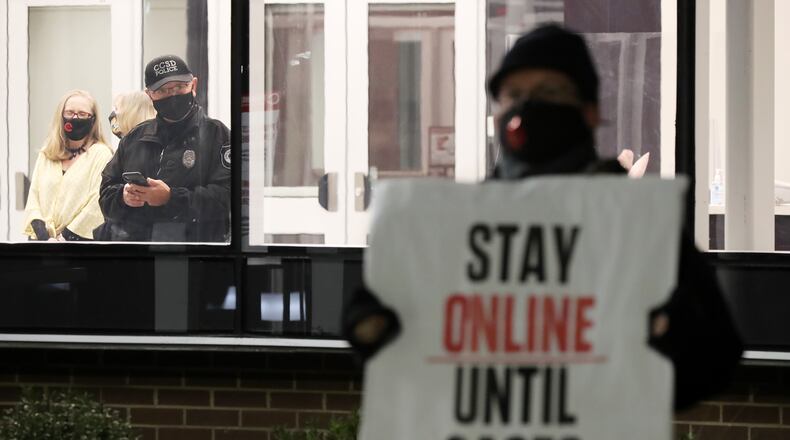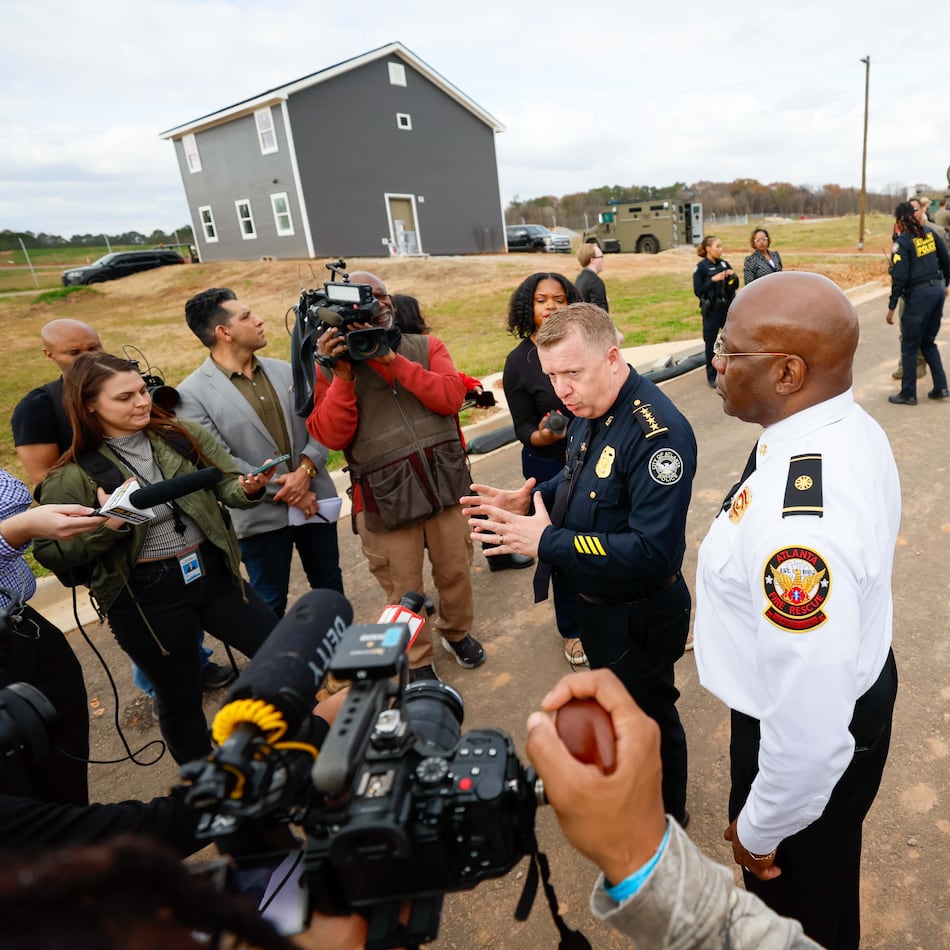On the first day in-person classroom instruction resumed in Cobb County schools after a break due to a surge in COVID-19 cases, more than 120 educators did not report to work.
Educators called out sick Monday at several schools, including Clay Harmony Leland Elementary and Osborne, Pebblebrook and South Cobb high schools, said school board member Leroy “Tre” Hutchins, who took office earlier this month. Hutchins said 37 teachers are out at Clay Harmony Leland, 19 at Pebblebrook, 33 at South Cobb and about 40 at Osborne.
Hutchins told The Atlanta Journal-Constitution that the absences appear to be “widespread,” and said he supports the decision educators made to stay home if they have been diagnosed with COVID-19 or are showing symptoms.
“Face to face doesn’t work if we continue to invite sick people into the building,” he said. “We need them to be well in order for them to teach.”
The AJC asked the Cobb County School District if it could provide the number of teachers at each school who are absent due to having COVID-19 or being exposed and in quarantine. District spokeswoman Nan Kiel, in an email, said the system has not noticed “any significant difference in teachers reporting to be ‘sick’,” and any educator who is absent due to an illness will have to provide a doctor’s note.
“Anytime a teacher is absent, the position is either filled by a substitute or other school staff is moved to supervise the classroom,” she said.
Kiel added that substitute teachers fill positions about 75% of the time during a normal school year. However, this year, they are filling about 69% of those positions.
The Cobb school district on Monday resumed both in-person and remote classes after transitioning last week to virtual-only lessons due to the high numbers of teachers and students battling COVID-19 or in quarantine.
More than 100 protesters rallied Thursday outside school district offices after two educators died from the disease: Dana Johnson, a first-grade teacher at Kemp Elementary school; and Cynthia Lindsey, a paraprofessional at Sedalia Park Elementary School. A third educator, Hendricks Elementary School art teacher Patrick Key, died Christmas day following a monthlong battle with COVID-19.
Teachers also want the district to allow educators who are classified as high risk to have the option to teach virtually and allow those who are comfortable being in the classroom to teach in person, said Connie Jackson, president of the Cobb County Association of Educators.
Superintendent Chris Ragsdale and the majority of school board members have not publicly responded to requests made during Thursday’s meeting to close classrooms.
Jackson said teachers are afraid to go back into the classroom.
“They know that the numbers are extremely high and that the spread in Cobb is ridiculously high,” she said of the COVID-19 numbers. “They are tired of being exposed to a deadly pandemic at work when there are alternatives to do it safely.”
Cobb school board member Dr. Jaha Howard on Sunday wrote a letter to Gov. Brian Kemp asking him to take three steps to make in-person learning safer for teachers: prioritize access to COVID-19 for teachers and school staff members; provide medical-grade face masks for all school staff members; and collect and review anonymous feedback related to COVID-19 from public education staff.
The letter was signed by Cobb school board members Hutchins and Charisse Davis, and boards of education members from Atlanta Public Schools, Clayton County, DeKalb County, Griffin-Spalding County and Gwinnett County.
“While most sectors of our economy have strong voices to champion their perspectives, we stand as champions for the men and women who dedicate their lives to educating our students,” the letter states.
Nearly 400 new COVID-19 cases have been added to the Cobb school district’s tally it has been documenting since the summer. As of Friday, the district had 2,784 cases reported since July 1, which is up from 2,391 reported as of Jan. 15, according to the system’s website that’s updated each Friday.
None of the district’s elementary schools have active cases that exceed 10, but that’s not the case for seven other schools. Dickerson Middle School has 13 active cases. At the high school level, Kennesaw Mountain leads the pack with 21, followed by North Cobb with 19, Pope with 13, Lassiter with 11 and Campbell and Walton with 10.
Middle and high schools lead the way with the highest number of cumulative cases, which the district began tracking since it started reopening classrooms on Oct. 5. Lassiter, North Cobb and Walton have 73 cumulative cases.
They are followed by Kennesaw Mountain with 68; Pope with 65; Hillgrove High School with 62; McEachern High School with 57; Kell High School with 55; McCleskey Middle School with 53; Harrison High School with 52; Allatoona High School with 42; Campbell High School with 41; South Cobb at 39; Kemp Elementary and Dickerson Middle at 37; Hayes Elementary School at 34; McClure Middle School at 31; and Kennesaw Primary at 30.
The district does not distinguish between student and staff numbers in its list of COVID-19 cases.
As of Monday, Cobb County had 48,628 confirmed COVID-19 cases, 657 deaths and 3,576 hospitalizations, according to the Georgia Department of Public Health. Its two-week case number per 100,000 people is 721, which is more than seven times higher than what’s considered by public health officials as high community spread. That’s lower than 940 cases per 100,000 reported on Jan. 11, but still higher than 613 cases per 100,000 people reported on Dec. 28.
About the Author
Keep Reading
The Latest
Featured


